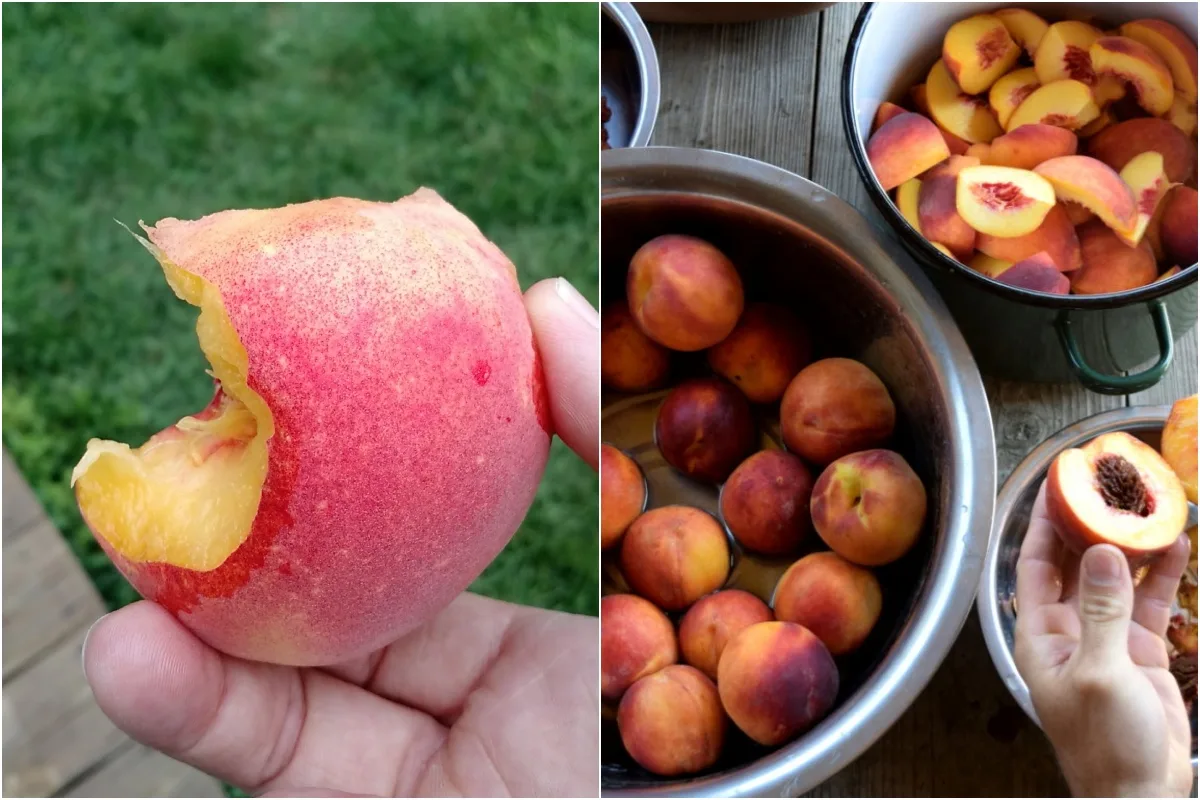
If one of your goals in life is to enjoy peaches all year long, in your muesli or on your peanut butter and peach jam sandwich, then keep reading.
Close your eyes for a moment and try to remember the last amazing peach you ate.
Was it mouthwatering and juicy, perfectly ripe? Does it bring back visions of summer fun? Were you eating it fresh or in a scrumptious baked form, say in the shape of a healthy peach cobbler?
Take those positive feelings, and get ready to preserve them for a fantastic bite of summer all winter long.
The good news is that there is more than one practical way to preserve peaches.
The method you choose will be dependent on your canning skills and storage space, as well as your desire to try something new.
If you want to eat and enjoy life on the healthier side, consider preserving your own peaches – so you know exactly what ingredients go in them.
I am talking about sun-ripened, picked at the height of harvest peaches that are aromatic and fresh, with or without skins on. If you can find organic peaches, great! If you grow them yourself, even better.
Just find a good source of peaches (or learn how to plant and grow your own peach tree), then quickly get started on preserving your own!
How to Pick a Perfect Peach
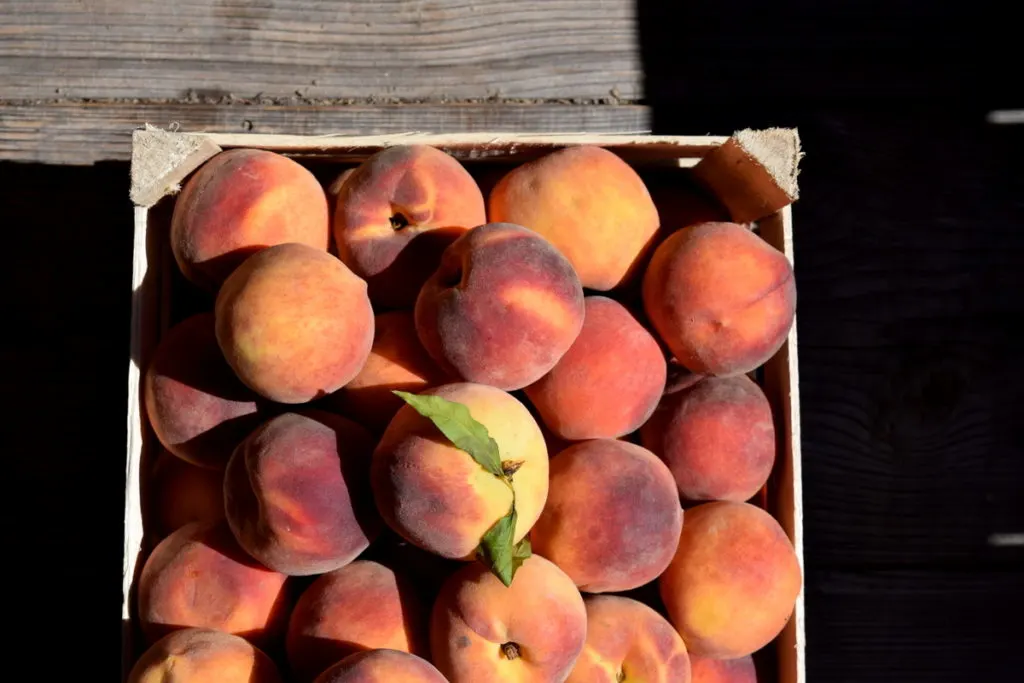
Even before thinking about canning or freezing peaches, you should know where you are getting your peaches from.
Also, try to gauge how many – or how much – you have time to preserve.
Freezing peaches is among the simplest and least time-consuming methods of preservation, but have you tried peaches in light syrup? Nothing can compare to opening a honey-sweetened jar of those beauties for a quick and refreshing dessert.
In the quest for a perfectly ripe peach, sniff the air and follow your nose. The aroma will let you know just how ripe they are, as is the case with selecting cantaloupes. The peaches should also be firm but not hard.
Avoid using peaches that are too soft or have large overripe spots.
Beyond looking at ripeness (or smelling for it), you will also have to decide when you will be preserving or eating those delicious peaches.
For example, if you don’t have time in the next few days to dedicate to cooking/canning/freezing, though you are at the market and don’t want to lose out on a good deal, all you have to do, is buy firmer, less ripe peaches.
Depending on the peach variety, you will also want to look at the intensity of color. The skins vary from dark yellow to red, which will give you a good indication of ripeness.
A few more peach-picking tips:
White-fleshed peaches are not acidic enough to can without an additional acid, so save those for fresh eating, jam or freezing.
If the peaches are getting wrinkly (past their prime), save yourself the trouble of preserving bad fruit and bake a peach cake instead.
Putting ripe peaches in the fridge will slow down the ripening process, though you only want to keep them there for 2-3 days. While the flavor will still be lovely, the texture may become less than ideal.
How to store unripe peaches
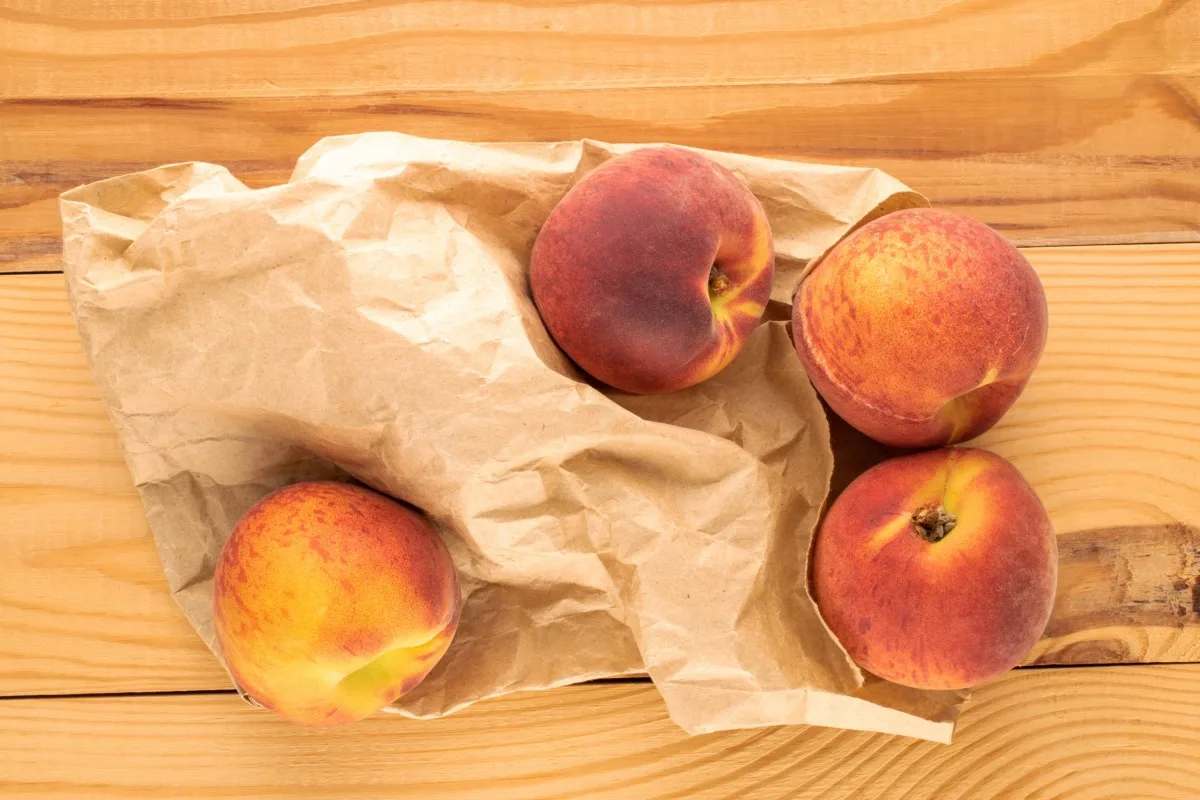
The perfectly ripe peach, besides being fragrantly peachy, will also be firm to the touch, but not too hard.
What if your peaches don’t smell, smell very little or are hard as rocks?
All you have to do is have a little patience and wait for them to ripen. Peaches are almost always picked before they are ripe, for they couldn’t be shipped economically (without the danger of going bad) any other way. This rings true for other fruits that continue to ripen after they are picked, such as apricots, pears, bananas, kiwis, nectarines and plums. This is called post-ripening.
If you are willing to wait for that decadent peach, you only have to store them at room temperature for two days, up to a week, possibly more, until they reach that ripeness you seek.
To ripen peaches faster, use a paper bag.
Grab a clean paper bag, carefully fill it with peaches, scrunch the top of the bag closed and let nature do its work. The ethylene gas will be working its magic in no time, and you will have ripe peaches much sooner than you think. If you add an already-ripe banana or apple, your peaches will ripen even faster.
This brown paper bag method works great for smaller amounts of peaches, but when you are getting a bushel of peaches – about 48 pounds! – it’s best to let them ripen at their own speed.
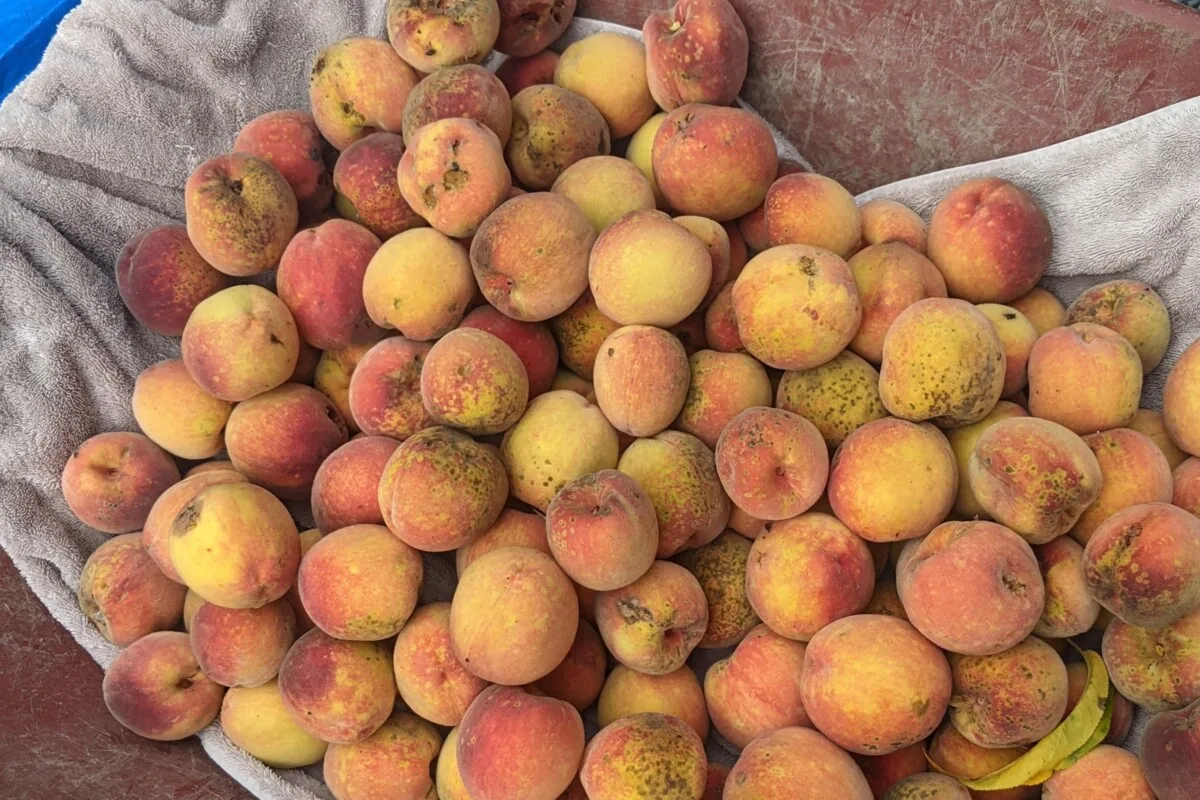
Once your peaches (however many of them) are fully ripe, it’s time to get to business and set about preserving them for later with any or all of these 4 techniques: dehydrating, canning, freezing or freeze-drying.
Dehydrating Peaches
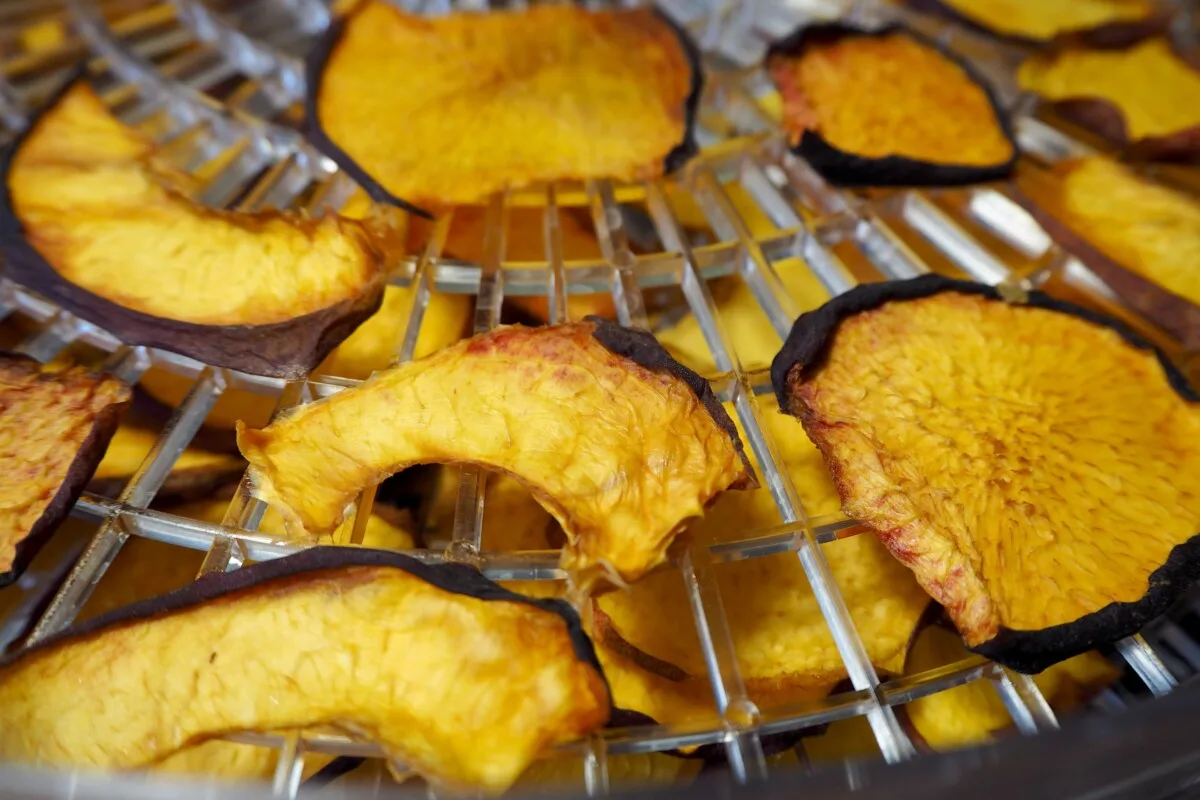
For those of you with a dehydrator, things are about to get super peachy. There are two basic ways of dehydrating peaches: in slices or as homemade fruit leather.
One is for grownups who like chunks of peaches in their morning oatmeal; the other is for children who like to munch on a fruit roll. Or is it the other way around? Both sound good to me.
To dehydrate peaches, first, you will want to peel them. Here is the easiest way to peel peaches.
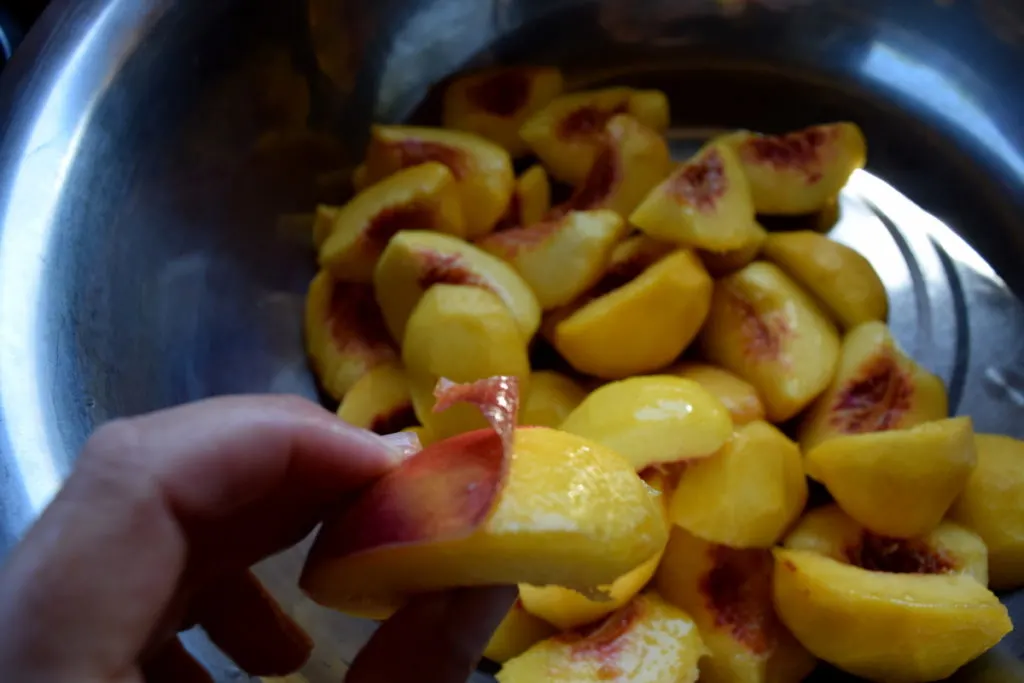
Once you’ve mastered that slippery step, you’re ready to go. Take your time to learn it because it applies to canning peaches as well. If you are freezing peaches, you can skip the peeling if you want to.
Next, you will want to thinly slice your peaches. Dip them in a solution of lemon water to prevent browning, then strain off the excess liquid.
Arrange the peach slices on your dehydrator trays, setting the temperature to 135 °F (57 °C). Dry for 8-16 hours, depending on the thickness of the slices. The trick to preserving them for a longer period of time is in knowing when they are done.
Dehydrated peaches should feel leathery and pliable yet dry to the touch.
Homemade peach leather is another option that is even easier to make, plus it can even be accomplished with the use of your oven.
If you don’t have the time or patience to wait around 6+ hours for your peaches to finish drying, let’s move on to some canning options instead. Most recipes take less than an hour to make, that is, if you are planning to make a small batch.
Canning Peaches
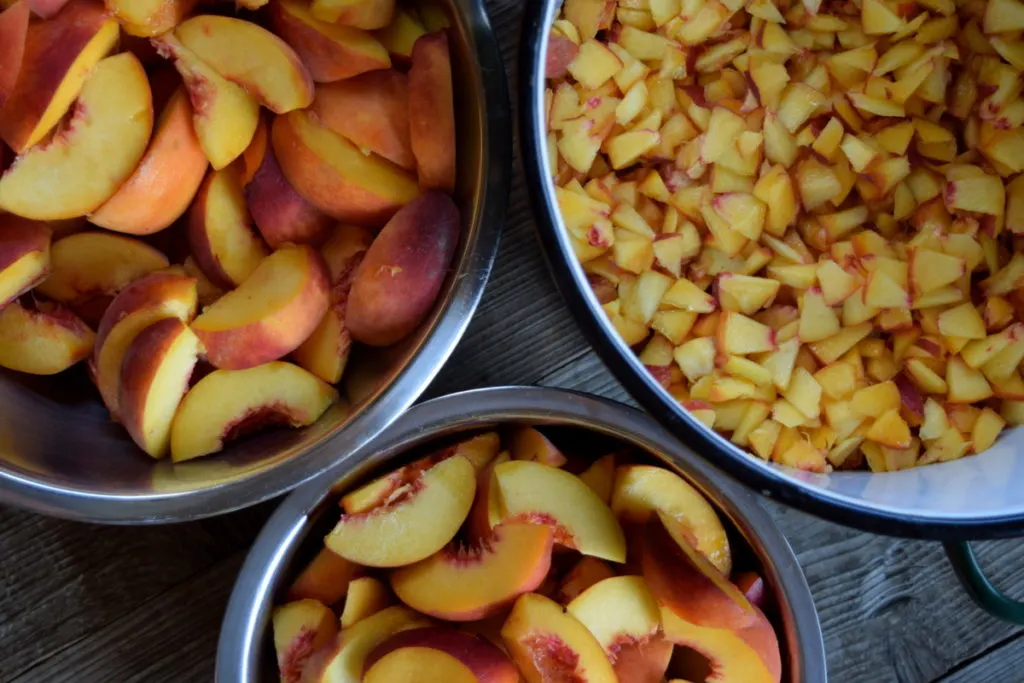
Let’s focus on the positives of a well-stocked pantry.
Canning is a wonderful way to:
- save electricity – by using none at all for storage (with zero risk if the power goes out)
- have ready-to-eat meals, snacks or side dishes
- preserve food for up to a year or longer
- stock up on essentials such as tomato sauce, pickles and jams, and even meats
- eat healthy food with ingredients that you can pronounce
Wash those jars, prepare your pots and your cooking station, then start processing those peaches for all they are worth – and that is a lot!
If canning brings you joy, why not try preserving peaches in a new way this summer? Here are a few recipes to get you started:
Peach Jam
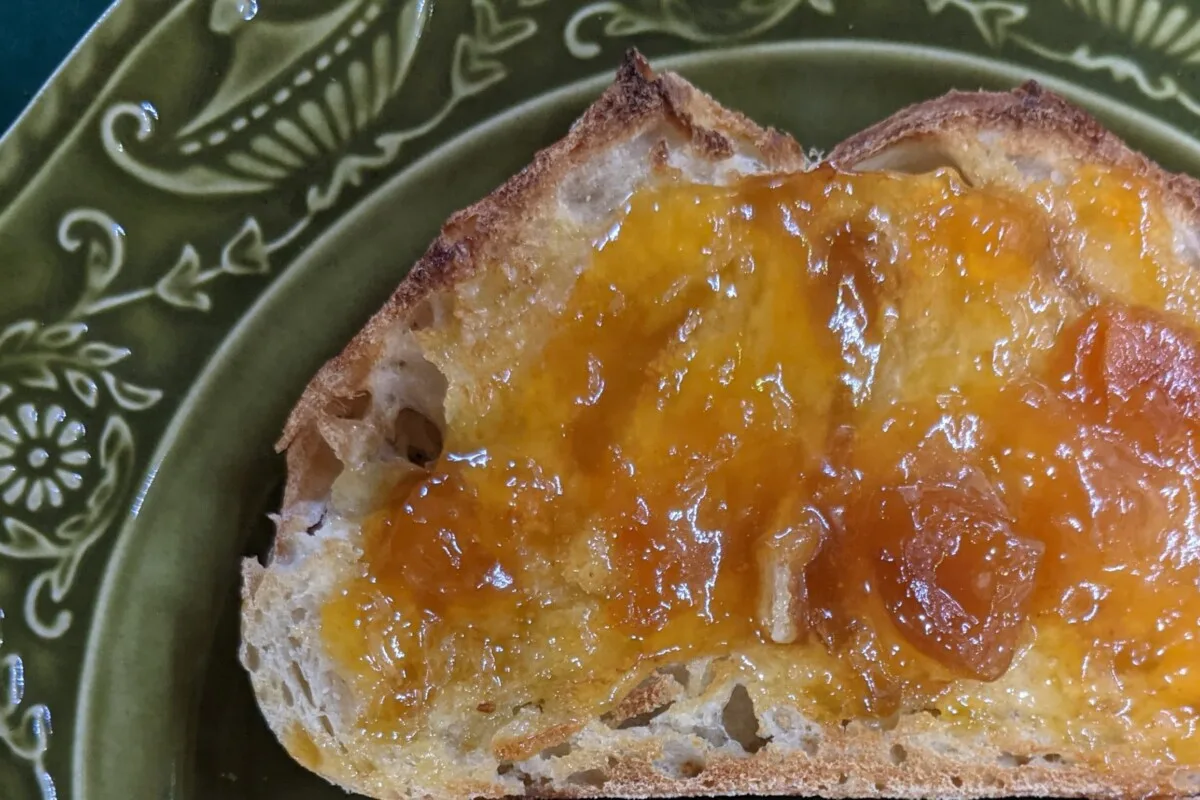
There are several thoughts on making fruit jams.
Some like it sweet, while others like it more characteristically fruity and acidic.
If you are in the mood for a classic version of country peach preserves, and you also happen to have 11 pounds of peaches on hand, this recipe for peach preserves has many accolades.
However, if you are seeking something more out of the ordinary, let me suggest making a batch, or two, of honey-sweetened peach vanilla jam.
Use either of these on your pancakes or crepes for a delicious morning treat, sparingly, of course, lest the jam runs out too soon!
Peach Chutney
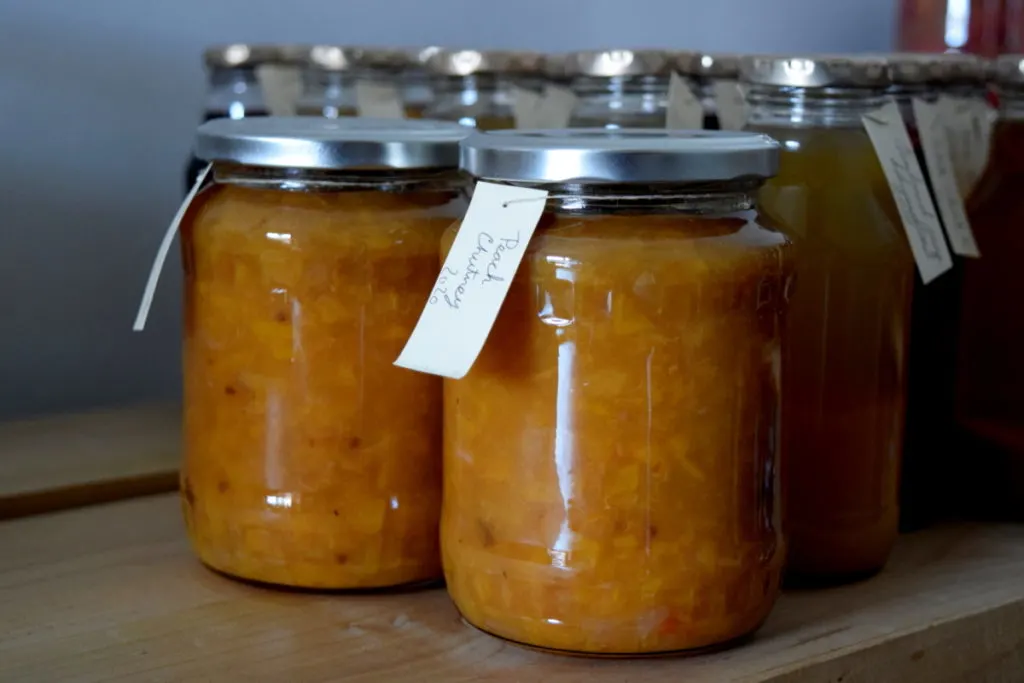
Chutney is a beautiful thing to fill in canning jars, that falls somewhere between the flavors of a jam and a pickle. Our pantry is never without several jars of peach chutney, apple chutney, plum chutney or even ginger pumpkin chutney – because one can only eat so much jam! Or so many pickles.
Peach chutney is a winning combination of ingredients that will help to spice up meals in the winter months, with a little hint of summer. Here’s the recipe.
Peaches in Syrup
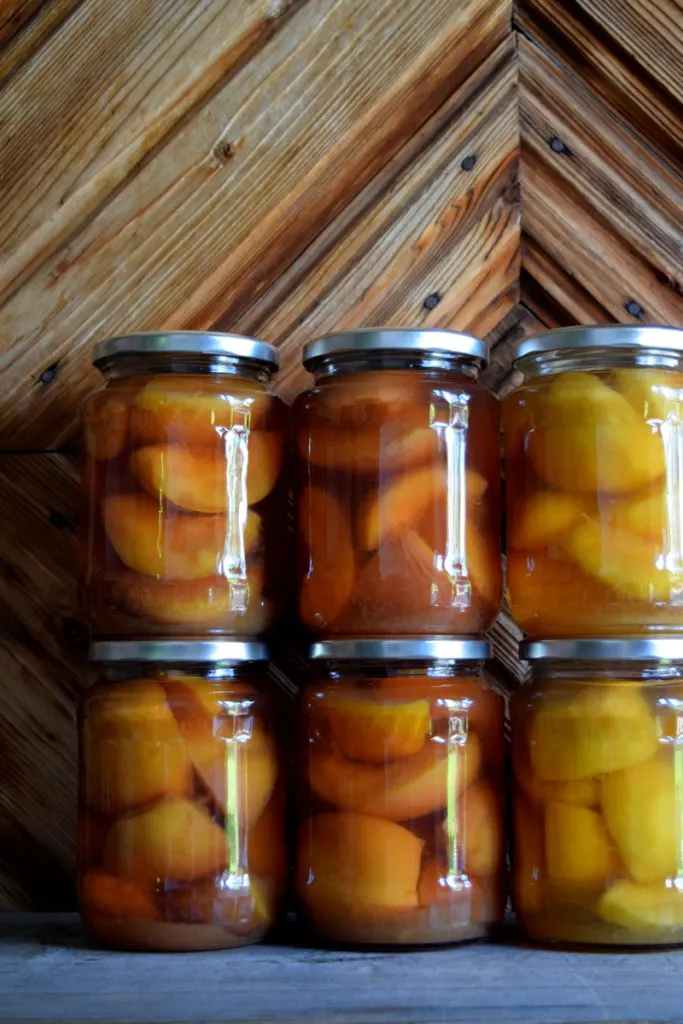
One jar of homemade goodness that everyone loves is peaches in syrup. Heavy, medium or light skins on or without, it is a must to preserve every summer.
You can even make the syrup with sugar, honey or maple syrup for an extra special treat.
The big question is, how many jars of peaches in syrup do you have space for? Keeping in mind that fewer peaches fit into each jar, compared to jam or chutney.
In my opinion, if you have plenty of peaches to choose from, it is best to learn how to can all three: jam, chutney and peaches in syrup.
If nature leaves you with fewer peaches this season, choose your favorite way to preserve them now and wait for a bigger harvest next year.
Freezing Peaches
One of the simplest and most uncomplicated ways to freeze peaches is with the skins on. In this way, they can last for up to a year in the freezer and are ready for immediate use in smoothies, muffins and peach pies.
Freezing peaches goes quickly, like this:
- wash the peaches
- cut into even slices (peeled or unpeeled)
- soak the peach slices in a mixture of lemon juice and water (this prevents browning of the the fruit)
- drain the juice off the peaches
- arrange peach slices on a lined baking sheet
- freeze for several hours, then store them in a labeled bag (or jar) in the freezer
If you are willing to go the extra mile, feel free to peel your peaches before freezing. It is an additional step that makes them ready for just about any recipe they may encounter.
An alternative way to freeze peaches is to puree them – which can be a real space saver in the freezer.
However, if space is of no concern, you can even freeze peaches whole! Now that is definitely something to think about.
Freeze-drying Peaches
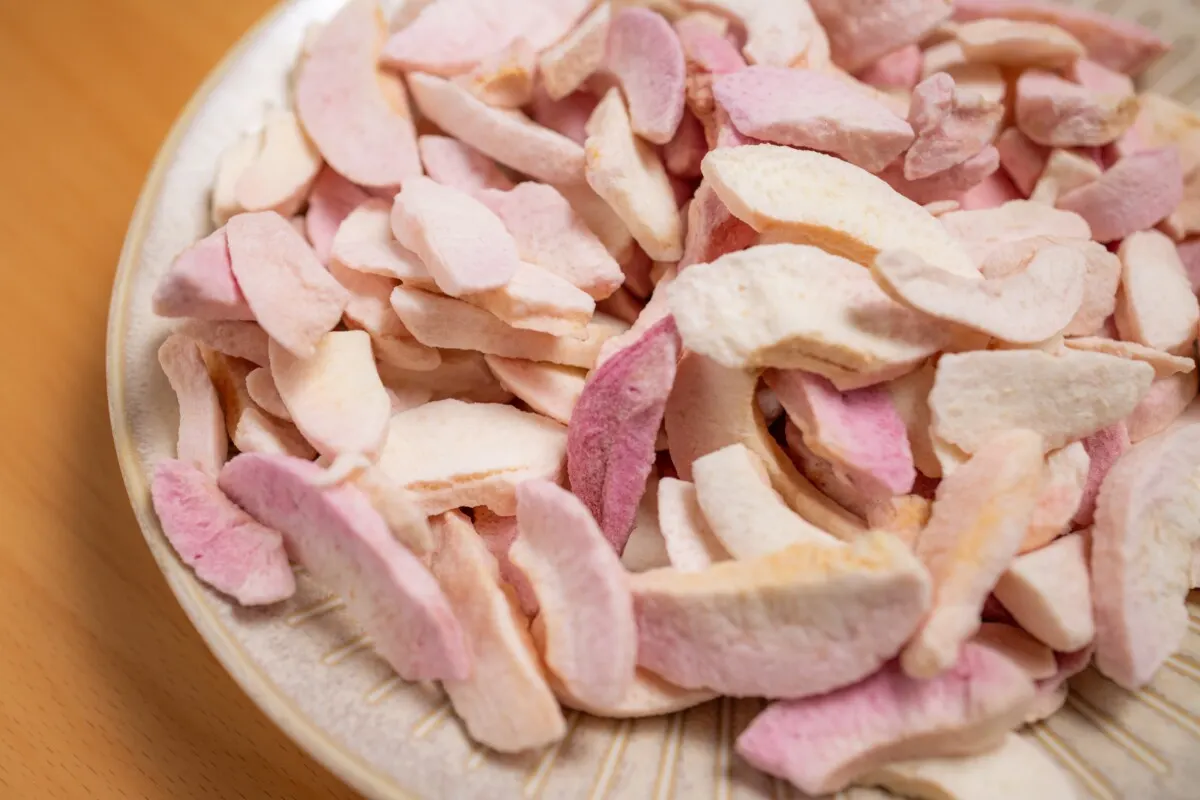
Not everyone has this option to consider, yet if you are looking for long-term food storage methods (up to 25 years!), freeze-drying may be just what you need.
Consider the following before setting out.
First and foremost, freeze-drying requires a lot of energy, in fact, it is one of the most energy intensive ways to preserve food. Here is an overview of the freeze-drying process for fruits.
At the same time, freeze-drying is also one of the best ways to preserve nutrients.
I’ve eaten my share of freeze-dried meals when camping and while waiting out a storm in our basement, though I’ve never had the chance to freeze-dry our own food. If the chance ever comes up, we’ll give it a try. Till then, the other methods of preserving peaches win out.
What will it be for you?
Eating your peaches fresh in season
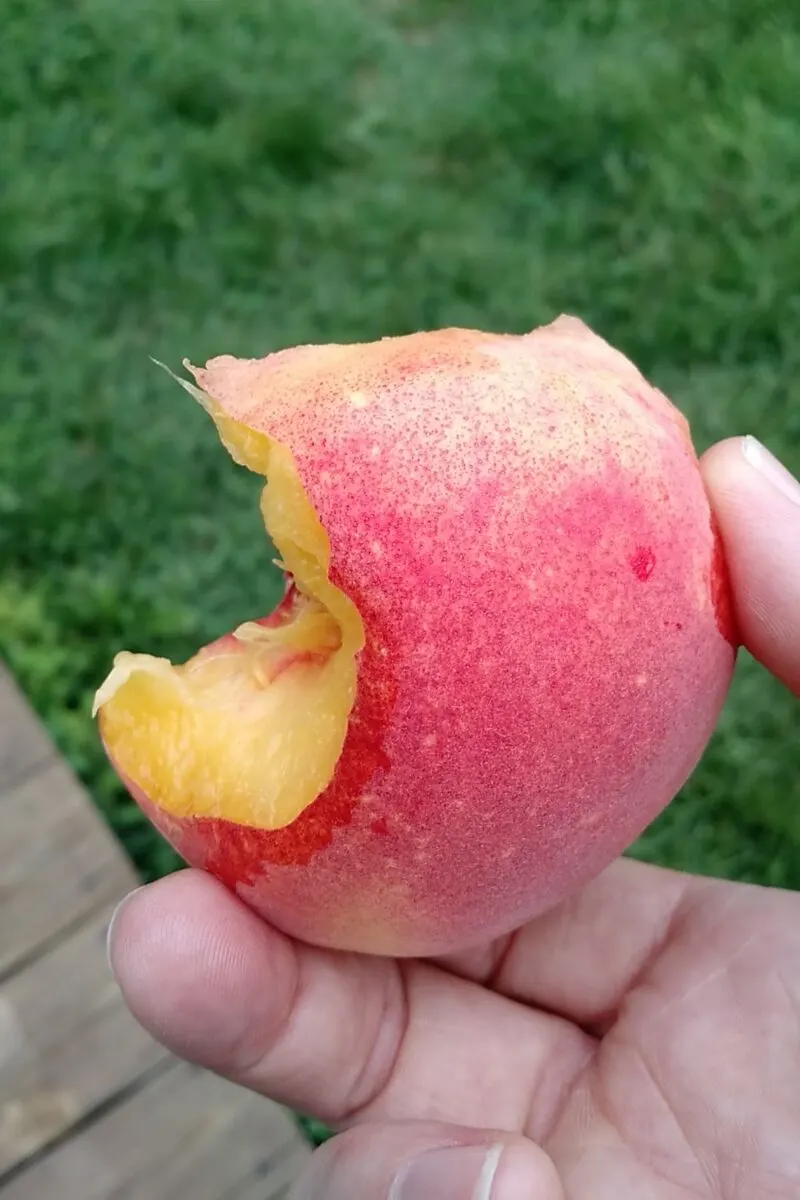
An article on preserving peaches would be incomplete if it didn’t mention at least a handful of ways to eat peaches in season.
After all, it is hard to resist the urge to bite into a juicy, deliciously ripe peach when there is a bowlful in the room and the warm summer breezes are blowing the fragrant aroma your way.
Think about using peaches for more than just pies and cobblers, and you will find that the peach season is very short indeed.
Find inspiration in the following recipes and see how you can preserve some peachy keen goodness for later:
Peach and Bacon Salad @ Paleo Leap
Naturally Sweetened Fresh Peach BBQ Sauce @ Whole Food Bellies
Frozen Peach Lemonade @ As Easy As Apple Pie
One Skillet Peach Glazed Chicken @ The Seasoned Mom
Fresh Peach Salsa @ Feasting At Home
Peach Ice Cream @ Allrecipes
Honey-Pickled Peaches @ Vegetarian Ventures

Get the famous Rural Sprout newsletter delivered to your inbox.
Including Sunday musings from our editor, Tracey, as well as “What’s Up Wednesday” our roundup of what’s in season and new article updates and alerts.

